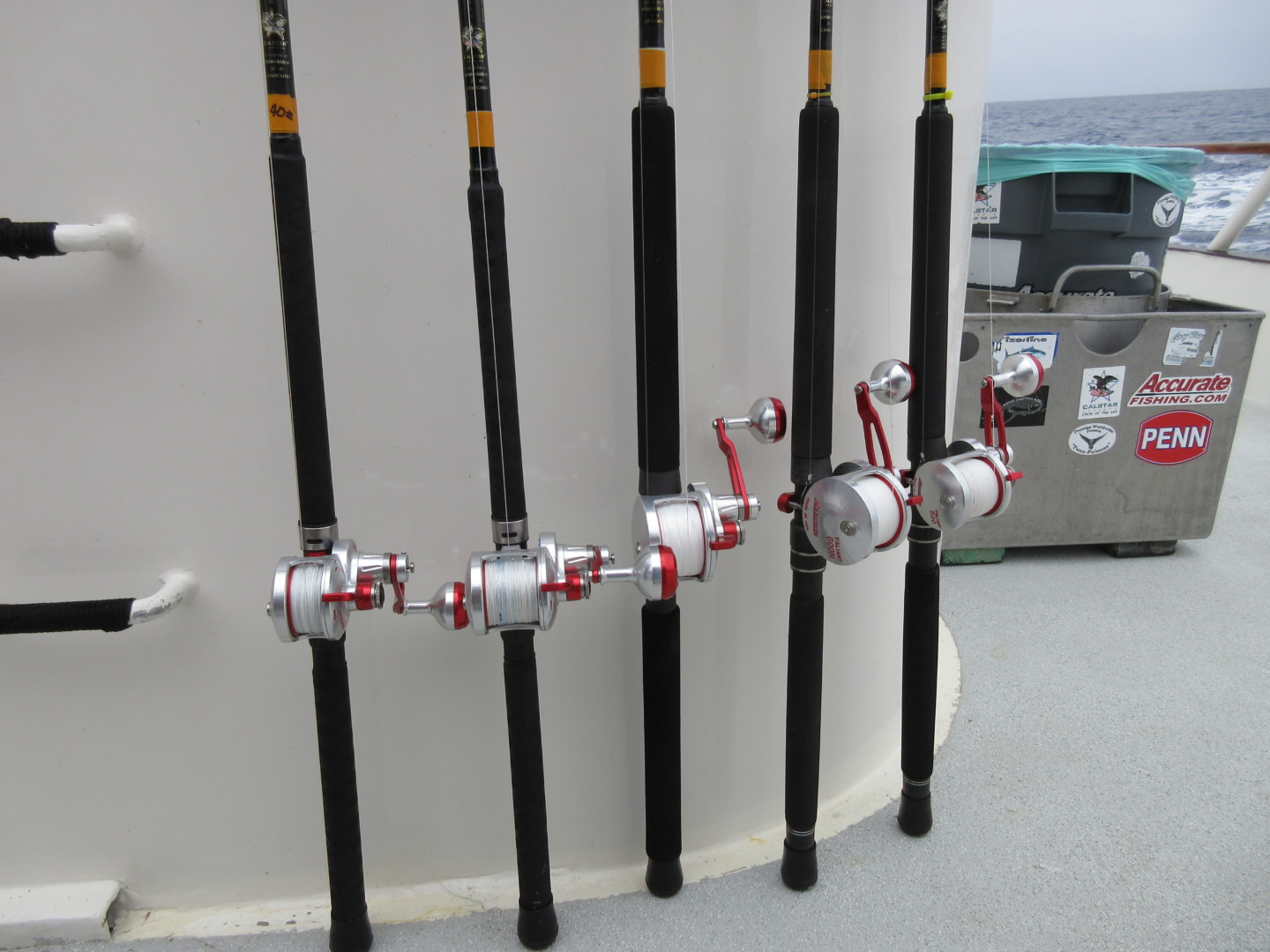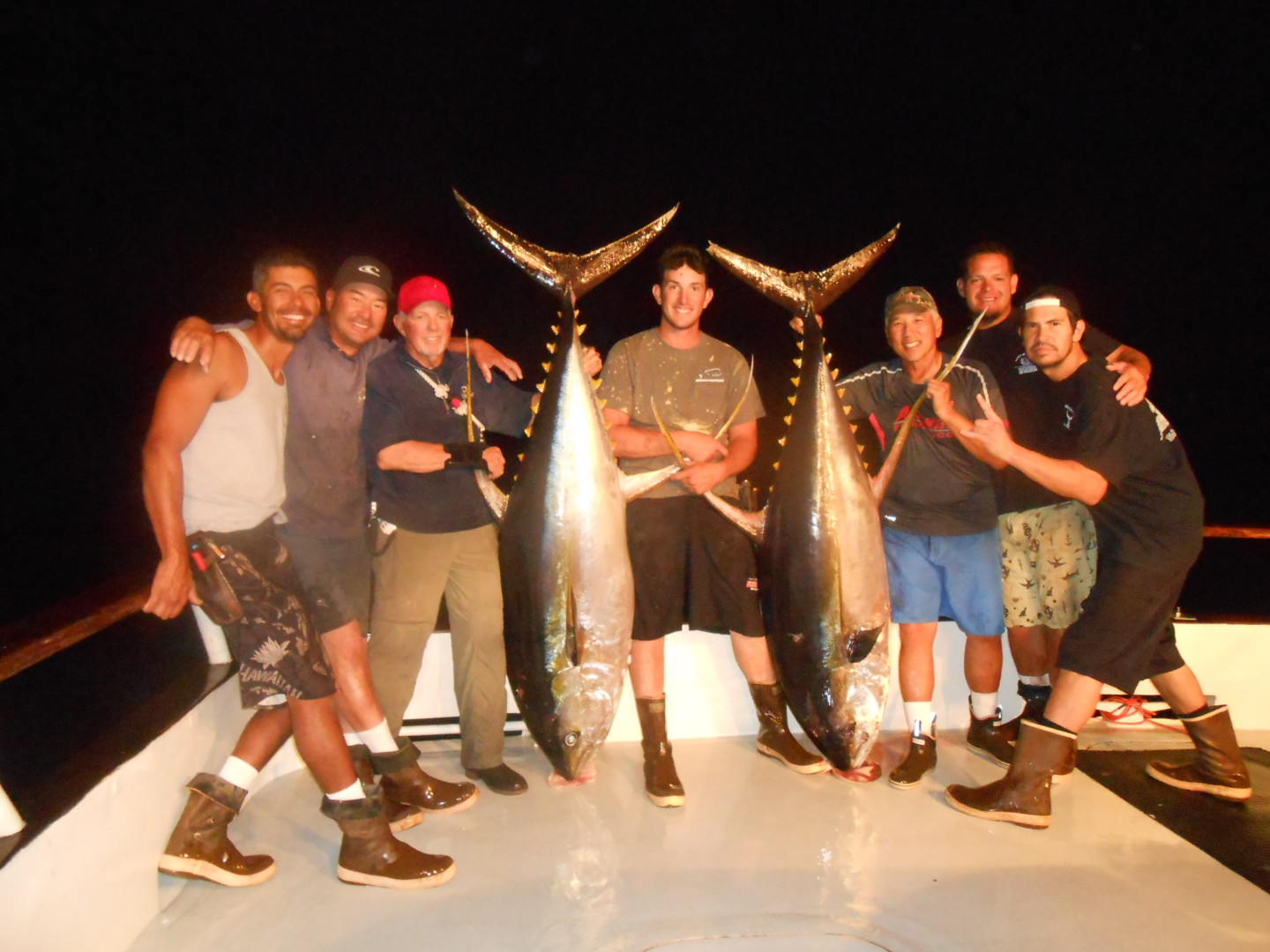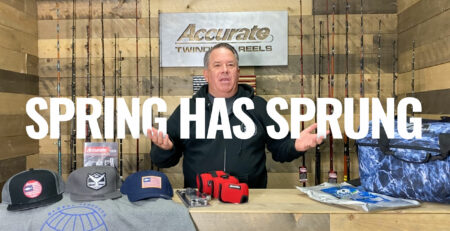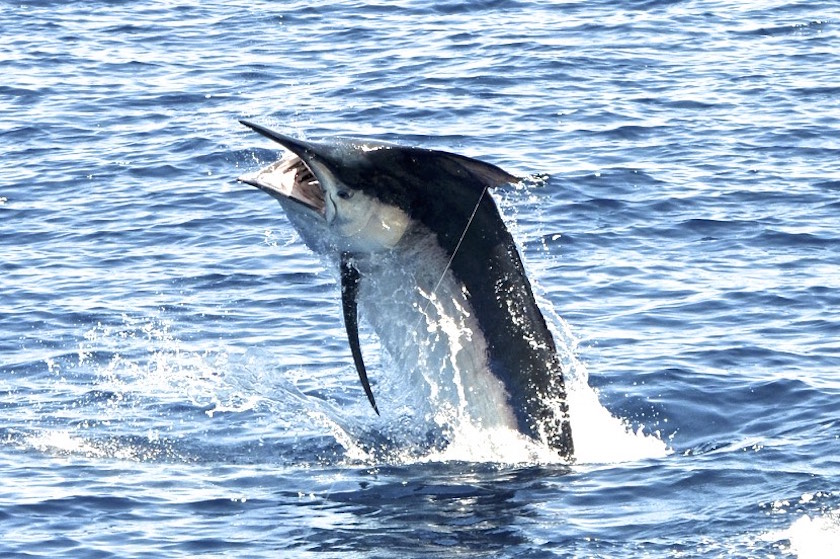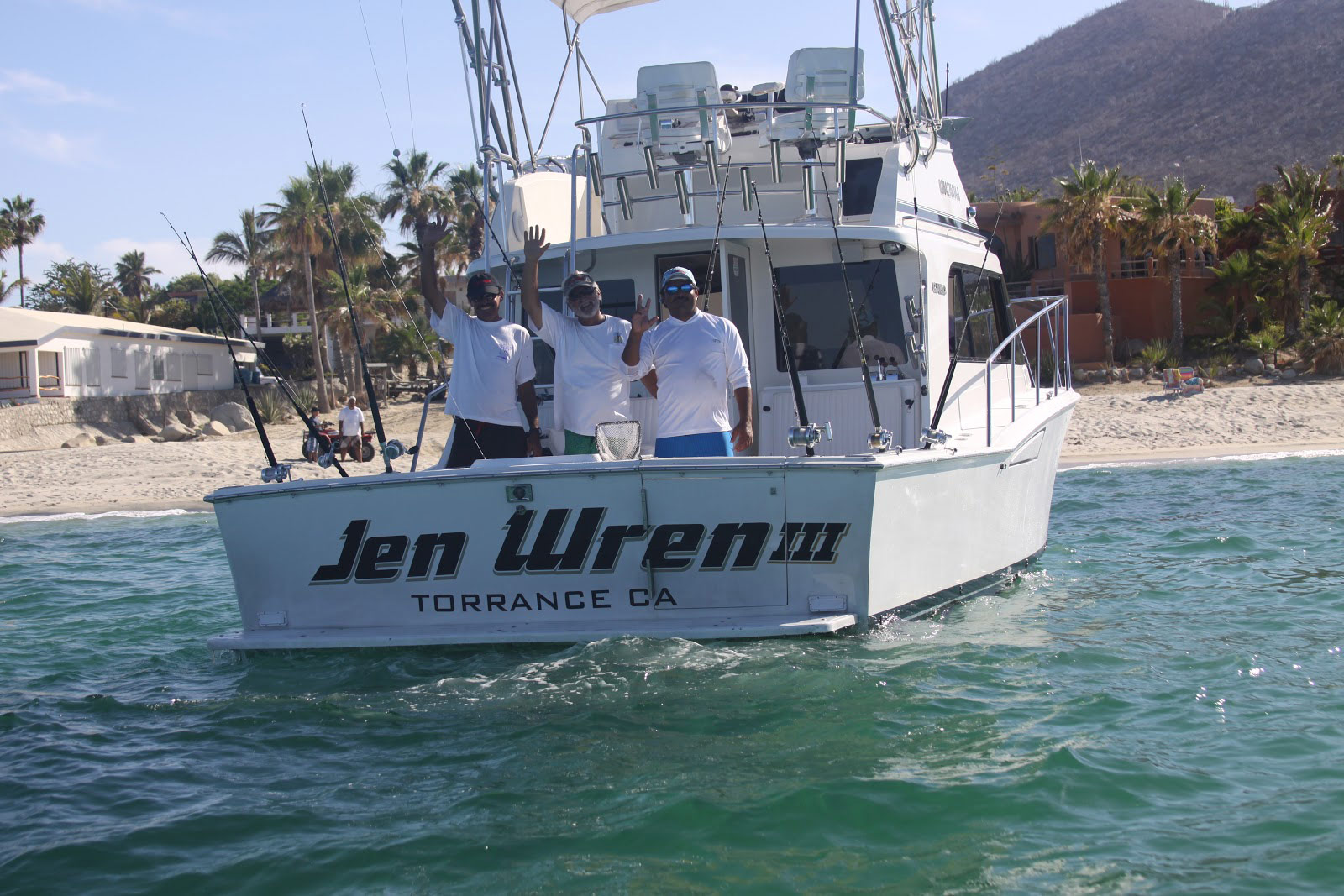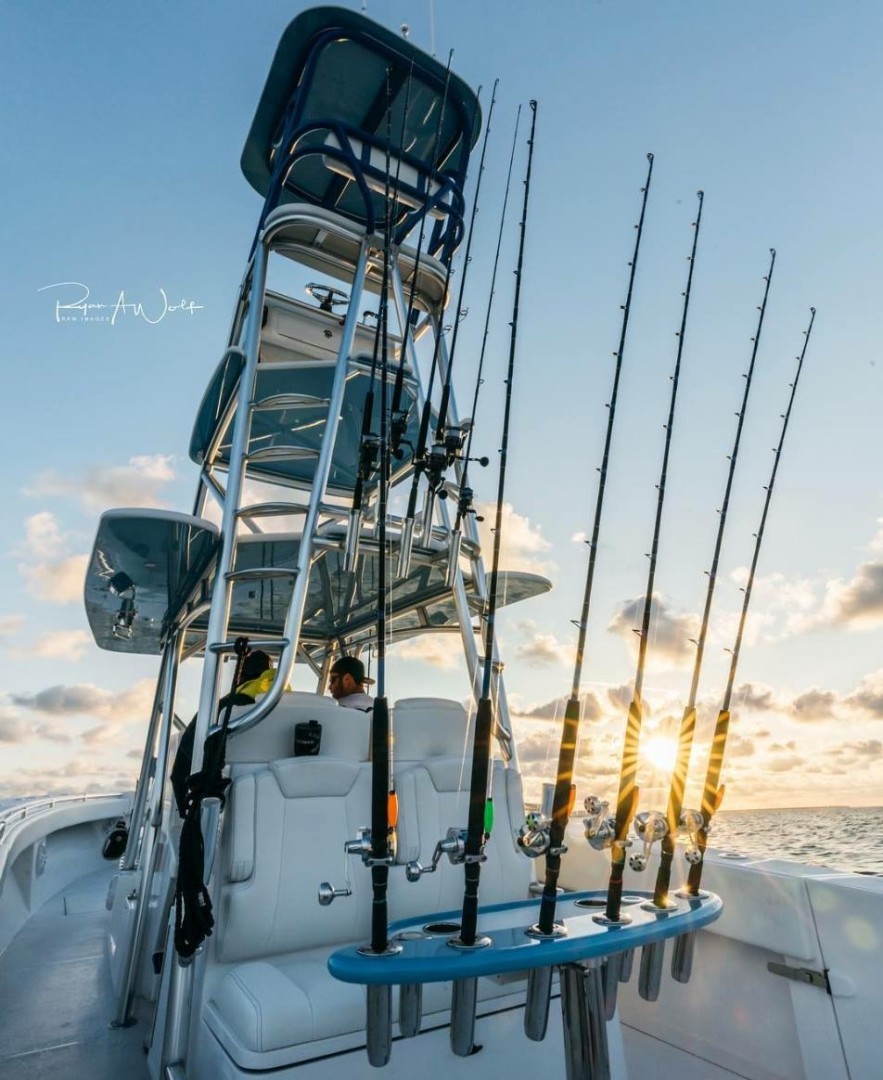Time to Rock: Bottom Fish Basics
Time to Rock: Bottom Fish Basics
 For years, bottom fishing has been a staple focus of coastal fishermen looking to load their freezers with excellent eating table fare. The innovation of braid and smaller, more efficient reels, has made this fishery a lot more enjoyable for the average angler. In the past 20 years we have went from fishing heavier, bigger reels with larger glass rods that made the entire experience one of fighting your tackle more than the fish to the tackle available to today, which is extremely light, fitting comfortably in your hand, making the whole catching experience way more interactive between the angler and the fish.
For years, bottom fishing has been a staple focus of coastal fishermen looking to load their freezers with excellent eating table fare. The innovation of braid and smaller, more efficient reels, has made this fishery a lot more enjoyable for the average angler. In the past 20 years we have went from fishing heavier, bigger reels with larger glass rods that made the entire experience one of fighting your tackle more than the fish to the tackle available to today, which is extremely light, fitting comfortably in your hand, making the whole catching experience way more interactive between the angler and the fish.
There is a lot of tackle to choose from but it’s best to stick with the basics. Most outfits on the market can be used for several different targeted fisheries. Braid has created the opportunity to take your small bass rig with 250 yards of 30lb braid and target shallow water (80 to 200 feet) rockfish. Here is some of the tackle that would meet your rock fishing needs:
Reels: Many of the new baitcast reels on the market are super easy to use with the levelwind feature plus they offer plenty of power to land even bigger bottom dwellers. Also, small conventional reels are light and easy to use as well and are typically stronger overall should you hook in to something that really pulls hard. With the small diameter of 30lb and 50lb braid it sinks faster and is way more sensitive, letting you feel the difference between structure and bites plus you can fit a lot of it on these smaller reels. Lighter braid seems to be easier to use for reds, chuckleheads, etc, because it gets to the bottom quick and is not hampered by strong currents like larger diameter line.
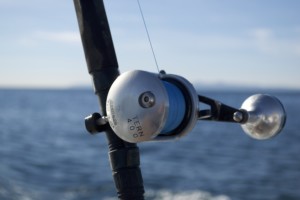 For 30lb braid, some reels to consider include the Accurate Valiant BV-300 and Tern TX-300. The BV being a lever drag model and the TX being star drag. If you’re looking to fish 40 to 50lb braid, some of the smaller conventional reels to check out would include the Accurate Valiant BV-400 and Tern TX-400.
For 30lb braid, some reels to consider include the Accurate Valiant BV-300 and Tern TX-300. The BV being a lever drag model and the TX being star drag. If you’re looking to fish 40 to 50lb braid, some of the smaller conventional reels to check out would include the Accurate Valiant BV-400 and Tern TX-400.
All the reels mentioned above come in a two gear ratios. One is a power ratio and the other is a speed ratio. The higher or mid range gear ratios are more effective so you can get your lures back from the depths quicker. The other important feature to look at is a longer power handle. It’s way more comfortable and easier to wind, giving you more torque when bringing up a big ling or rockfish.
Rods: The lightweight, sensitive rods of today are a perfect fit for many of the reels previously mentioned. Keeping things simple, look at 7’, 7’2”, or 7’6” rods. It’s a good idea, if possible, to put the reel on the rod in the store and check the balance of the combo. You will be holding this for hours on the boat so you’ll want to make sure you like the fit and feel. Make sure the rod’s reel seat fits your reel tightly with no movement. It’s always a good idea to have things solid. This alleviates any unnecessary movement. Using a reel for bottom fishing will be a lot more comfortable without a clamp and the amount of drag you will be using does not dictate using a one. When looking at these rods check out the rod ratings. Remember, if it’s rated at 30lb to 50lb then it’s a 40lb rod that will support using 30 to 50lb braid. You’ll also want a more parabolic rod when fishing braid. This takes the pressure off of you and transfers it on to the fish. Look at medium to fast action rods that have a more parabolic mid section shutting off back towards reel. The 7’6” length is a very good choice, but all three lengths will work. Try to get a composite rod when looking at choices. They tend to be stronger and the way they are constructed today, will not be that much heavier.
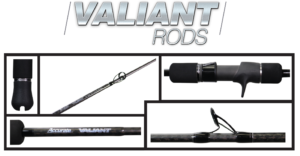 Accurate has a whole new line of Valiant Rods including slow jigging models to pick from that will fit your fishing needs. Smaller profile combos are so much comfortable for this type of fishing.
Accurate has a whole new line of Valiant Rods including slow jigging models to pick from that will fit your fishing needs. Smaller profile combos are so much comfortable for this type of fishing.
Line: Braided line is the best choice for bottom fishing with 30, 40, and 50 pound tests being the goto line ratings. Lighter tests are good for cleaner, less structured areas and heavier test being better for areas with more structure. Flourocarbon or monofilament leaders are always a good choice. Flouro is tougher in the more abrasive areas fished where mono seems to work great in less rocky areas. The size of leader used is typically between 25lb and 40lb and is easier to tie smaller knots that go in and out of guides smoothly. The length of leaders is usually 2 to 3 feet, but as long as 6’ for guys that don’t want to retie knots with braid. Learn to tie a good connection knot between the leader and braid being used. The Improved Pena knot, Albright knot and Double Uniknot are quick and solid connections. It is very important to tie knots cleanly as to not over wrap lines and make sure you cinch your knots tightly.
Artificial lures: There are a lot of artificial lures to choose from but here are a few to consider for Rock fishing.
Some of today’s artificial lures have ultraviolet and glow properties built right in them. UV colors, unlike other colorations, offer luminescence that cannot be seen by human eyes, but have been proven to be seen by fish and they react to it even in low light conditions. They also feature glow components that, once charged, will stay lit in the deeper water structures targeted. The bottom line is that it’s all about visibility and the action of lures to illicit a strike.
Lead head jigs with trailers have been very productive in both Northern and Southern California waters. Many of these jigs come with UV or glow features as mentioned above and are offered in a variety of fish catching colors. Depending on how deep you are fishing, the more popular sizes are 2, 4 and 6 ounce but they also have an 8oz model for those anglers targeting deeper waters with heavier current. These lures get bit on the drop, dead sticking (no movement) and on a slow pump retrieve right on the bottom. Rockcod love them, but they are “Killer” on big Lingcods.
 Swim baits have been popular for coastal fishing for years and have been part of the rockfish anglers collection too. The swimbait lures have to be coupled with a Shad head with weights between 1oz and 6oz depending on depths being fished. Wind and stop, as well as a slow drag on the bottom are two techniques that frequently work best. Some of the more popular sizes are 5”, 6” and 8” models with Shad heads in weights of 3 to 6 ounce being staples in depths of 150’ to 300’. They have gained momentum on both the west and east coast for a variety of bottom dwellers.
Swim baits have been popular for coastal fishing for years and have been part of the rockfish anglers collection too. The swimbait lures have to be coupled with a Shad head with weights between 1oz and 6oz depending on depths being fished. Wind and stop, as well as a slow drag on the bottom are two techniques that frequently work best. Some of the more popular sizes are 5”, 6” and 8” models with Shad heads in weights of 3 to 6 ounce being staples in depths of 150’ to 300’. They have gained momentum on both the west and east coast for a variety of bottom dwellers.
Scents are a critical part of fishing plastic baits. If you have a scent on the lure, the fish will hold on to it longer for an effective hookset. Some of the scents on the market to look at include Hot Sauce and Unibutter. They are available in local tackle stores and online. Let me stress that this is a very important part of your rockfish arsenal.
Metal jigs can be very productive when rockfish are active to get a strike. Dropping them to the bottom with 3 to 5 cranks up and drop back or basic yoyo will get bit. As mentioned previously, putting on a plastic trailer with scent will also increase the percentage of a strike. Size and weight of metal lures will depend on the depth being fished. Deeper or heavier current will dictate heavier weight lures. It’s always good to have jigs in the 2 to 6 ounce sizes in either anchovy or sardine and yellow or red crab colors. Trailers work very good with a big grub, octopus style jig, or even a feather tied hook. Single hooks are very good to limit snagging on the bottom. On a sand or smooth bottom, treble hooks can help with hook up ratio.
Miscellanous
Other things to have on the boat should include knot pullers, braid cutters and, if fishing metal jigs, a pair of split ring pliers.
 Knot pullers can be searched on the internet or you can make your own. The easiest pair to make is to get a ¾” dowel and cut it into two 5” lengths. Take electrical tape and wrap the dowels until they are bulkier then take a piece of thicker shrink tube and carefully heat it to adhere to the dowel. These work well and are inexpensive versus the metal alternatives. I have both and they are very critical on the boat to cinch knots between braid and leader.
Knot pullers can be searched on the internet or you can make your own. The easiest pair to make is to get a ¾” dowel and cut it into two 5” lengths. Take electrical tape and wrap the dowels until they are bulkier then take a piece of thicker shrink tube and carefully heat it to adhere to the dowel. These work well and are inexpensive versus the metal alternatives. I have both and they are very critical on the boat to cinch knots between braid and leader.
Keeping your catch fresh is important. Make sure if you are on your own boat to get a fish bag to hold enough ice. It is best to bleed fish as you hook them and get them straight into the bag. Putting them on ice firms the meat up to make filleting them easier.
With any type of fishing, the key is to be prepared and this article gives you a list of things to consider for the upcoming rockfish season. Check out all state regulations and adhere to the laws. Know them and carry the state regulations on your boat. There are new regulations for 2019 with new places and depths we can fish. Become familiar with them. If fishing on a charter boat, the crew can answer any questions you might have regarding your trip.
Have fun and be safe.
Ben Secrest
 Custom Color Reels
Custom Color Reels

